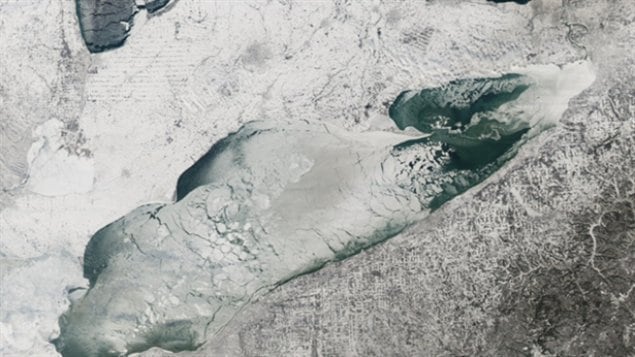Canada’s Great Lakes are freezing over for the first time in 20 years. The ice cover is considerably more this year, than in many of the winters of the recent past.
The Canadian Ice Services most recent data, as of January 29th, shows Lake Ontario currently has the least ice coverage at 23 per cent. Lake Superior, the largest of the Great Lakes, is well over half (65 per cent) covered in ice. Lake Michigan is about 38 percent covered and Lake Huron is almost 67 per cent covered in ice. Lake Erie, while the southernmost lake, is also shallowest of the lakes. It is virtually locked in ice, with 97 per cent coverage.
Great for ice-fishing
George Leshkevitch, a physical scientist with the Great Lakes Environmental Research Laboratory, told CBC the thick ice covering will be great for ice fishing. It’s also good for Whitefish spawning beds.
The last time the lakes had this much ice cover this early in the year was during the 1993 – 1994 winter season.
Not many people in eastern Canada will be surprised at the news. The polar votex, that took temperatures down to minus 30 C, was a shocking reminder of just how cold our winters can be.
The other benefit of the ice cover remains to be seen, but dropping lake levels during the summer-time have caused shipping problems and challenges for cottagers who love to make use of the water and the beaches in a variety of ways. Lack of adequate ice cover during the winter was one of the contributing problems.







For reasons beyond our control, and for an undetermined period of time, our comment section is now closed. However, our social networks remain open to your contributions.